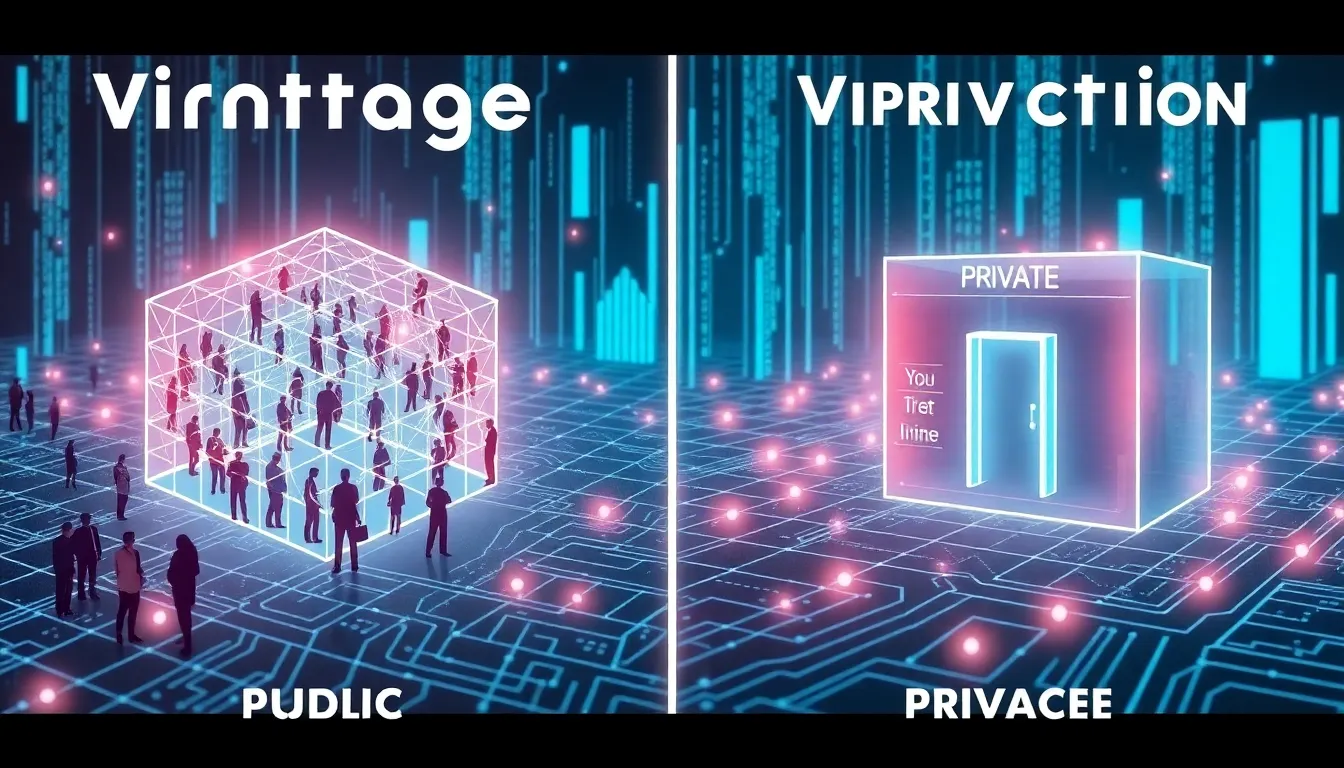Imagine a world where trust isn’t a gamble but a guarantee. Enter blockchain, the tech that’s revolutionizing everything from finance to food safety. It’s like a digital ledger that everyone can see and no one can tamper with—think of it as a group project where everyone actually does their part.
Table of Contents
ToggleWhat Is Blockchain?
Blockchain serves as a secure and transparent digital ledger, vital for trust among users. This technology enables decentralized data storage across various sectors.
Definition and Key Concepts
Blockchain refers to a system where data is grouped in blocks, linked in a chronological chain. Each block contains transaction records, timestamps, and a unique cryptographic hash. This hash secures the block and connects it to the preceding block, ensuring integrity. Decentralization plays a critical role, distributing control among multiple participants instead of relying on a single entity. Transparency allows all network participants to view transactions, promoting accountability. Fundamental elements like nodes, cryptography, and consensus mechanisms contribute to the system’s reliability.
How Blockchain Works
Blockchain operates through a series of interactive components. Transactions initiate when users submit data to the network. Nodes validate these transactions through consensus mechanisms, ensuring accuracy and preventing fraud. Once validated, transactions are bundled into a block, which then gets added to the existing chain. Afterward, each participant receives an updated copy of the blockchain, maintaining uniformity. This process emphasizes security, as altering any block without consensus is nearly impossible. Additionally, each transaction is timestamped, fostering a permanent record that enhances traceability.
Types of Blockchain

Blockchain technology has various types, each serving specific purposes and functionalities. Understanding the differences helps in selecting the right type based on needs.
Public vs. Private Blockchains
Public blockchains are open to anyone, allowing users to join freely and participate in transaction validation. Bitcoin and Ethereum exemplify public blockchains. Private blockchains restrict access to a select group, providing controlled environments ideal for businesses. Hyperledger Fabric is a notable example of a private blockchain, tailored for enterprise solutions.
Permissioned vs. Permissionless Blockchains
Permissioned blockchains require users to obtain authorization before joining, enhancing security and control over data. These blockchains facilitate a regulated environment, often found in enterprise applications. Permissionless blockchains, in contrast, allow anyone to participate without restrictions. They offer transparency and decentralization, making them suitable for cryptocurrencies and open-source projects.
Key Components of Blockchain Technology
Blockchain technology consists of several essential components that contribute to its functionality and security. Understanding these key elements aids comprehension of how blockchain operates effectively.
Blocks and Chains
Blocks serve as the fundamental units of a blockchain. Each block contains a list of transactions, timestamps, and a unique cryptographic hash. Connecting these blocks creates a chronological chain, ensuring data integrity. When one block is added, it references the hash of the preceding block for security. This design establishes an unchangeable record, making it extremely difficult to alter previous transactions. In total, a blockchain consists of multiple linked blocks, with the first block known as the genesis block. Each subsequent block builds on the last, reinforcing the entire blockchain’s structure through this interconnection.
Consensus Mechanisms
Consensus mechanisms play a critical role in validating transactions within the blockchain. They ensure agreement among network participants on the validity of transactions. Various types of consensus algorithms exist, with Proof of Work and Proof of Stake being the most common. Proof of Work relies on computational puzzles that miners solve to validate transactions, while Proof of Stake allows validators to create new blocks based on existing tokens they hold. Each mechanism encourages network security and integrity, preventing malicious actions by requiring significant effort or resources for illicit changes. All consensus methods enhance trust among participants by ensuring a unified agreement on the blockchain state.
Use Cases of Blockchain
Blockchain technology offers diverse applications across multiple sectors. Its potential is increasingly recognized, leading organizations to leverage its capabilities for innovation and efficiency.
Finance and Cryptocurrencies
Blockchain revolutionizes the finance sector through enhanced security and transparency. Cryptocurrencies, such as Bitcoin and Ethereum, utilize this technology to facilitate peer-to-peer transactions, eliminating third-party intervention. Users enjoy lower transaction costs and faster processing times compared to traditional banking systems. Decentralized finance platforms capitalize on blockchain to provide lending, borrowing, and trading services without intermediaries. Additionally, smart contracts automate agreements, enforcing terms seamlessly and reducing the risk of default.
Supply Chain Management
In supply chain management, blockchain enhances traceability and accountability. Businesses can track products at each production stage, ensuring authenticity and compliance with regulations. This visibility helps reduce fraud and counterfeiting, which has significant financial implications for brands. Retailers and manufacturers use blockchain to share data among stakeholders, improving collaboration and decision-making. With improved efficiency, organizations can minimize delays, optimize inventory levels, and respond quickly to consumer demands, creating a more agile supply chain.
Healthcare Applications
Healthcare applications benefit from blockchain’s secure data management capabilities. Patient records can be stored on a blockchain, ensuring privacy while enhancing accessibility for authorized healthcare providers. This technology enables seamless sharing of medical information, reducing administrative burdens and improving care coordination. Secure data sharing fosters trust among patients, providers, and insurers, ultimately leading to better healthcare outcomes. Furthermore, clinical trials utilize blockchain to ensure data integrity and transparency, enhancing the credibility of research findings.
Getting Started with Blockchain
Understanding blockchain involves accessing the right resources and tools. These elements empower beginners to become knowledgeable participants in the blockchain space.
Resources for Learning
Various online platforms offer in-depth courses on blockchain technology. Websites like Coursera and Udemy provide structured lessons that cover fundamental concepts. Books such as “Blockchain Basics” and “Mastering Bitcoin” serve as great introductions filled with essential information. Additionally, the Blockchain Council maintains valuable certifications for those seeking formal recognition. YouTube channels such as Simply Explained present engaging videos, simplifying complex topics into digestible segments. Blogs and articles on Medium highlight the latest trends and insights within the blockchain field, keeping readers informed.
Tools for Beginners
Beginners benefit from user-friendly tools that facilitate blockchain exploration. Wallets like MetaMask allow users to manage cryptocurrency easily, providing a secure space for transactions. Platforms such as Remix offer integrated development environments for writing smart contracts. Furthermore, block explorers like Etherscan enable individuals to view transaction histories and blockchain activity seamlessly. Testing environments such as Ganache provide an opportunity for users to experiment without financial risk, enhancing hands-on learning experiences. Resources like GitHub host numerous community projects that encourage collaboration and innovation among beginners.
Blockchain technology stands at the forefront of innovation across multiple industries. Its ability to provide secure and transparent transactions is reshaping how businesses operate and interact with customers. As more sectors recognize the benefits of decentralization and traceability, the demand for blockchain solutions will only grow.
For those eager to dive into this fascinating world, numerous resources are available to help beginners grasp the fundamentals and explore practical applications. Embracing blockchain could open doors to new opportunities and drive significant advancements in various fields. The journey into blockchain is just beginning, and its potential is boundless.








